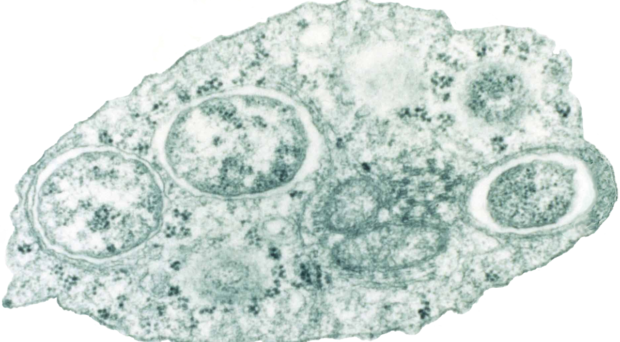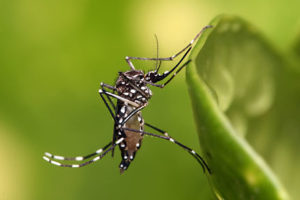
Despite advances with the development of a vaccine, dengue continues to be a major mosquito-borne viral infection in many parts of the world, impacting 100 million people per year. A new paper popped up recently on Gates Open Research, the open peer review/preprint website of the Bill and Melinda Gates Foundation that provides evidence of another successful tool to combat this disease. The paper was written by Scott O’Neill, faculty at Monash University and Director at the World Mosquito Program, and his coauthors at Monash and at James Cook University in Cairns. The article describes the successful scaled deployment of Wolbachia in Aedes aegypti to protect the community from arboviruses transmitted by these mosquitoes, including dengue.
So what is Wolbachia? Wolbachia is a genus of Gram-negative endosymbiotic bacteria that is naturally present in many insects, such as in the fruitfly Drosophila melanogaster. However, it is absent from Aedes aegypti (the yellow fever mosquito) and some other medically important mosquito species. Experimental infection of mosquitoes with this bacteria have been demonstrated to have multiple effects. One of the traits of Wolbachia is a gene drive-like attribute, called cytoplasmic incompatibility, where uninfected female mosquitoes that mate with infected male mosquitoes will not produce any offspring from the mating. Given that Aedes aegypti typically only uses the semen of the first male it mates with, that sterilization has a large effect on fecundity, and consequently mosquito population numbers. This attribute is utilized by the company MosquitoMate to control invasive Aedes albopictus in the US. Cytoplasmic incompatibility is beneficial for the spread of Wolbachia because infected females can successfully reproduce, even if they mate with infected male mosquitoes, providing a relative fitness benefit to infected mosquitoes, driving Wolbachia through the population. However, there is a slight fitness cost associated with the infection itself, which keeps the bacterium from completely infecting every individual in the population.

In addition to this strategy, Scott O’Neill and others have documented that infection by specific strains of Wolbachia (particularly the strain wMel) have another effect. Mosquitoes infected with wMel become refractory to infection by several medically important arboviruses such as dengue virus, chikungunya, as well as Zika virus. This realization lead to the suggestion that in addition to using Wolbachia as a gene drive mechanism, and for population suppression, it could also be used to make Aedes aegypti mosquitoes refractory. The idea is that by simply introducing Wolbachia into mosquito populations, via the release of infected mosquitoes, Wolbachia would spread and eventually most mosquitoes would become unable to transmit dengue and other viruses. In order to implement this idea, Scott O’Neill, Scott Ritchie, and many others funded Eliminate Dengue, the predecessor of the World Mosquito Program, a non-profit company, supported by the Bill and Melinda Gates Foundation, and many others. They started their trials primarily in Cairns, but established field sites and collaborations in many tropical countries (Indonesia, Brazil, Colombia, Vietnam, Sri Lanka, Mexico, and some Pacific Islands) with high burden of dengue infection.
In this current paper, Scott and his coauthors describe the scaled strategy that they used to deploy Wolbachia-infected mosquitoes in Townsville, a medium-sized city in northern Australia with a population of about ~187,000, and an area of 66 km2. Townsville have had both imported and locally transmitted dengue cases reported in the past, with 54 locally-acquired cases in the period 2010 and 2014. The deployment happened in 4 stages, during 2015 and 2016. The first stage covered 18 suburbs with known highest dengue transmission risk, where program staff released Wolbachia-infected mosquitoes placed as eggs in a bucket with water and food in about 20% of all residential properties. Eggs and media was replaced every two weeks until Wolbachia infection increased to exceed 50% of mosquitoes collected using BG Sentinel traps, for at least two consecutive weeks. Stage 2, 3 and 4 expanded the area of releases to additional 14 suburbs. Here, releases were conducted by the community, involving school children as well as local businesses, using a modified food pail. In addition to involving the community, these releases facilitated an integration of an outreach program, informing and educating the public about mosquitoes, dengue and the World Mosquito Program. Altogether, during the 28 month of the program, 4 million Wolbachia-infected mosquitoes were released.
The deployment of mosquitoes infected with the wMel strain of Wolbachia was a resounding success, leading to the reliable establishment of the bacteria even after releases have stopped, once the 50% threshold was met. Establishment took a few month longer in some suburbs, and a few suburbs needed supplemental releases to make sure that Wolbachia becomes established. Importantly, the bacteria has not been lost from the mosquito population in any of the suburbs once releases have stopped. In terms of dengue transmission, only four locally transmitted dengue cases occurred in the post-release period, relative to 54 locally-acquired cases in the preceding period. Only one of these cases resided in the area where releases have occurred, and the location of infection was uncertain for even that case. Therefore, it seems that the presence of Wolbachia-infected mosquitoes protected the residents from dengue transmission, despite an increase in the number of imported dengue cases in the same period.
 One of the remarkable features of this publication, and release program, is the level of attention put into developing a community engagement framework that they called a Public Acceptance Model (PAM). The PAM focused on (1) raising awareness of the program within the community; (2) measuring community awareness and acceptance using quantitative surveys; (3) providing an opportunity for feedback as well as for opting out from direct participation; (4) establishing an outside community reference group of key stakeholders to independently review the program. These efforts led to high levels of awareness and acceptance in the public, which is crucial for the success of such programs. In addition, the fact that the authors involved the community in the releases, especially the schoolchildren in the Wolbachia Warriors Program, provided further opportunities for outreach to the public.
One of the remarkable features of this publication, and release program, is the level of attention put into developing a community engagement framework that they called a Public Acceptance Model (PAM). The PAM focused on (1) raising awareness of the program within the community; (2) measuring community awareness and acceptance using quantitative surveys; (3) providing an opportunity for feedback as well as for opting out from direct participation; (4) establishing an outside community reference group of key stakeholders to independently review the program. These efforts led to high levels of awareness and acceptance in the public, which is crucial for the success of such programs. In addition, the fact that the authors involved the community in the releases, especially the schoolchildren in the Wolbachia Warriors Program, provided further opportunities for outreach to the public.
So what does this mean for the Wolbachia strategy and the World Mosquito Program? The authors state that this study demonstrates that the wMel strain of Wolbachia can be effectively deployed in large geographic areas, and is effective to reduce dengue transmission. I would argue that this study also demonstrates that the Wolbachia strategy is ready to be deployed in large tropical cities with high levels of dengue transmission at a reasonable cost. The authors argue that costs can be reduced to less than $1 per person due to less monitoring and higher population density. One potential complication in these tropical settings could simply be higher temperatures. Experimental evidence demonstrates that maternal transmission of wMel becomes unstable in Ae. aegypti at high temperatures – however, the authors argue that female mosquitoes select cryptic breeding sites with more favorable microclimates and lower temperatures. This effect of high temperature might explain the slower than expected spread of Wolbachia in the city of Cairns, which is more tropical and has higher levels of dengue cases relative to Townsville. In a recent paper, this slower than expected spread was attributed to the separation of different areas by highways, and the occasional loss of wMel in mosquitoes. Ongoing field trials in Indonesia, Brazil and other countries will show whether this becomes a practical problem for the spread of Wolbachia in other tropical cities. I’m looking forward to reading about their results in the near future! Until then, we can check on their progress on the World Mosquito Program website.

Comments